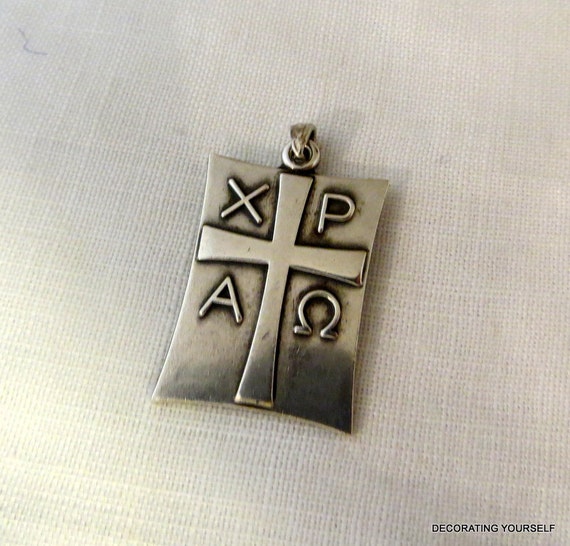

The first and last letters of both Jesus (IC) and Christ (XC) are placed together to form this monogram. IC XC – An abbreviation of the Greek name Jesus (Iasous) Christ (Christos). Behold, the virgin shall conceive and bear a son, and shall call his name Immanuel.” It would be under Constantine the Great that Christianity would become a legal religion throughout the Roman Empire, causing the church to explode in both size and popularity.ĭEXTRA DOMINI – Latin for “the right hand of the Lord.” It always accompanies an image of a hand.ĭOMINUS NOSTER JESUS CHRISTUS – Latin for “Our Lord Jesus Christ”.ĮCCE AGNUS DEI – Latin for “behold the Lamb of God.” John the Baptist said this when he saw Jesus approaching him (John 1:29).ĮCCE HOMO – Latin for “behold the man.” This exclamation was made by Pontius Pilate as he presented Jesus to the Jews (John 19:5).ĮMMANUEL (IMMANUEL) – A greek word (second spelling is the Hebrew word) for “God with us.” The word is found in Isaiah 7:14, “Therefore the Lord himself will give you a sign. The experience would deeply impact Constantine and would solidify his positive attitude towards both Christ and Christianity. That day his army won a decisive, upset victory at the Milvian Bridge, allowing him to march on Rome and conquer it. Some historians say that as Constantine prepared for battle, he saw a vision in the sky of the Chi Rho and heard a voice proclaim, “In this sign you shall conquer.” Others say that he had a dream that evening, and that someone in the dream told him to affix the symbol to his shields and to then go and face the enemy.1 The later account is most likely true but, in either case, Constantine quickly ordered the Chi Rho painted on all of his soldiers’ shields and standards.

There are two different takes on what happened next. At the bridge a larger and stronger army under the leadership of Maxentius awaited him. The Chi Rho’s popularity got a strong boost after Constantine, a great military commander and disputed Roman Emperor, was on his way to a difficult battle at the Milvian Bridge. One example above is combined with the Tau cross. The Chi Rho is often combined with other monograms such as the alpha and omega and Ihs to form some interesting and beautiful combinations. This symbolizes peace in Christ and was very popular at burial sites. The Chi Rho design can be combined with doves or doves wings. It could be the word "nika" meaning “to conquer.” The meaning of this symbol would be “Christ conquers.” It could also be the word Noster meaning “our Lord.” In this case, the symbol would read “Christ our Lord.” 3. What word the “N” represents is up for debate. The Chi Rho is sometimes shown with the letter “N”. There are many artistic variations of the Chi Rho. The symbol can be frequently found carved in the catacombs, on tombs and wall paintings. In the example above, the next letter “I” is shown. When displayed a line above the letters shows it is an abbreviation. The Chi (χ = ch) and the Rho (ρ = r) are the first three letters of Christ (Christos) in the Greek language. It is sometimes referred to as a Christogram. This monogram is the oldest known monogram of Jesus Christ dating back to the second century. It is the most common prayer used by the Catholic church to honor Mary.ĬHI RHO – 1. It is sometimes called the “Angelical salutation”. This symbolizes that Jesus was and will be involved with the beginning, continuation and the end of all things.ĪMEN – A Hebrew word meaning “true,” “certain” and “may it be so.”ĪVE MARIA - Latin for “Hail Mary”. When included in the symbol, it is located between the Alpha and Omega. A variation of the Alpha & Omega has been found that contains the Greek letter “Mu” which is found in the middle of the Greek alphabet. It is not uncommon to show them together with an image of Jesus.Ģ. When displayed, the Alpha & Omega are usually paired together, although on rare occasions they are shown individually.

The symbol is formed by combining the first letter of the Greek alphabet (Alpha) and the last letter (Omega). Arianism taught that Jesus sprang from God the Father, suggesting that Jesus was not present in the beginning with the Father this implied that Jesus was not equal with the Father. Arianism was a cult that sprang from Christianity in the early days of the church. This symbol was very important in the early church as it was used to make a statement against the heresy called Arianism. His statement also means He will continue to exist after this world comes to an end. This monogram is based on Revelation 1:8 where Jesus declares that He is the “first and the last, the beginning and the end.” Jesus was making the claim that He existed before anything was created, and thus took part in its creation.


 0 kommentar(er)
0 kommentar(er)
